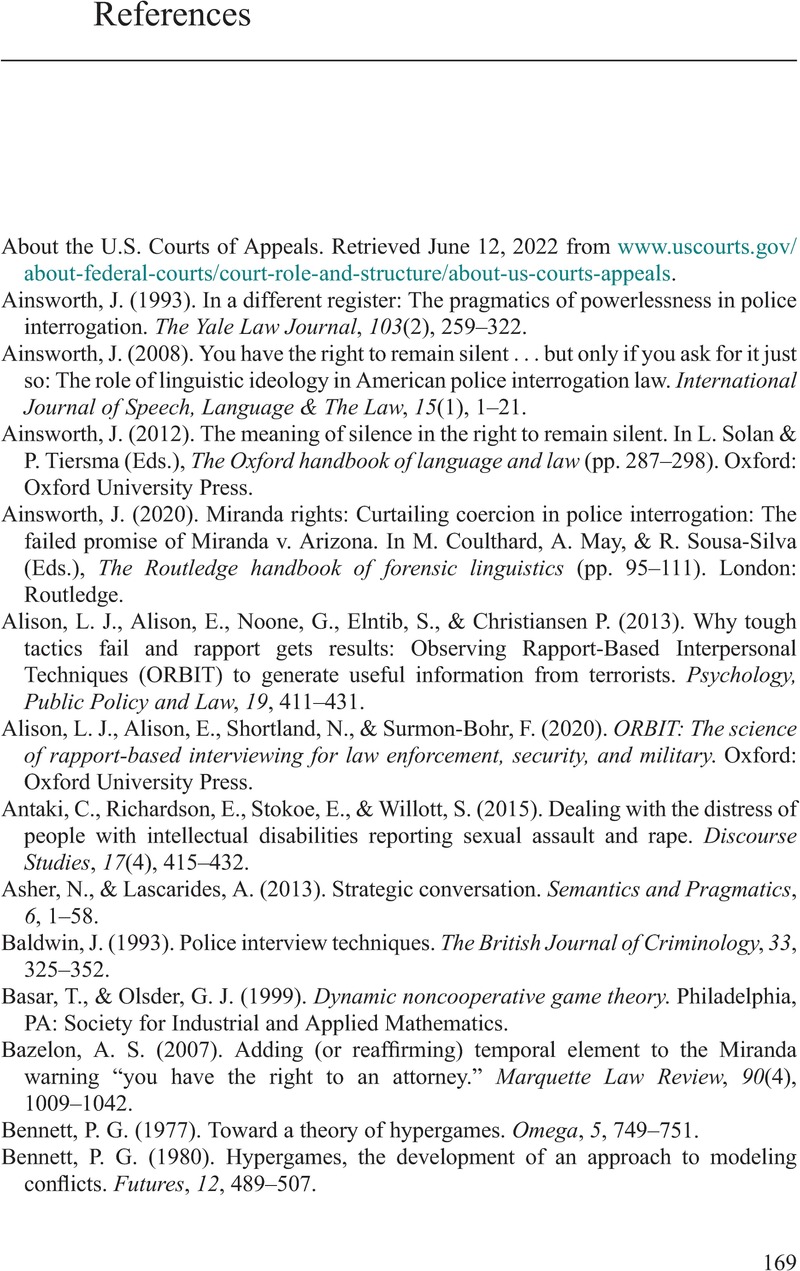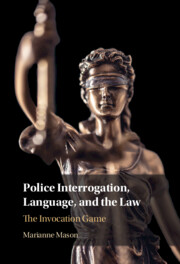Book contents
- Police Interrogation, Language, and the Law
- Police Interrogation, Language, and the Law
- Copyright page
- Contents
- Figures
- Tables
- Acknowledgments
- 1 Introduction
- 2 In the Judges’ Own Words: The Law and Custodial Interrogation in the United States
- 3 Police Interrogation in the United States: From the Reid Technique to the High-Value Detainee Interrogation Group Report
- 4 The Invocation Game: The Prelude to Custodial Interrogation
- 5 Invocations for Counsel, the Rulings, and the Courts: A Statistical Analysis of the Corpus
- 6 Police Interrogation Reform in the United States: Paths to Consider
- Appendix: Jurisdictions and Case Counts
- Glossary
- References
- Index
- References
References
Published online by Cambridge University Press: 23 December 2023
- Police Interrogation, Language, and the Law
- Police Interrogation, Language, and the Law
- Copyright page
- Contents
- Figures
- Tables
- Acknowledgments
- 1 Introduction
- 2 In the Judges’ Own Words: The Law and Custodial Interrogation in the United States
- 3 Police Interrogation in the United States: From the Reid Technique to the High-Value Detainee Interrogation Group Report
- 4 The Invocation Game: The Prelude to Custodial Interrogation
- 5 Invocations for Counsel, the Rulings, and the Courts: A Statistical Analysis of the Corpus
- 6 Police Interrogation Reform in the United States: Paths to Consider
- Appendix: Jurisdictions and Case Counts
- Glossary
- References
- Index
- References
Summary

- Type
- Chapter
- Information
- Police Interrogation, Language, and the LawThe Invocation Game, pp. 169 - 181Publisher: Cambridge University PressPrint publication year: 2023



